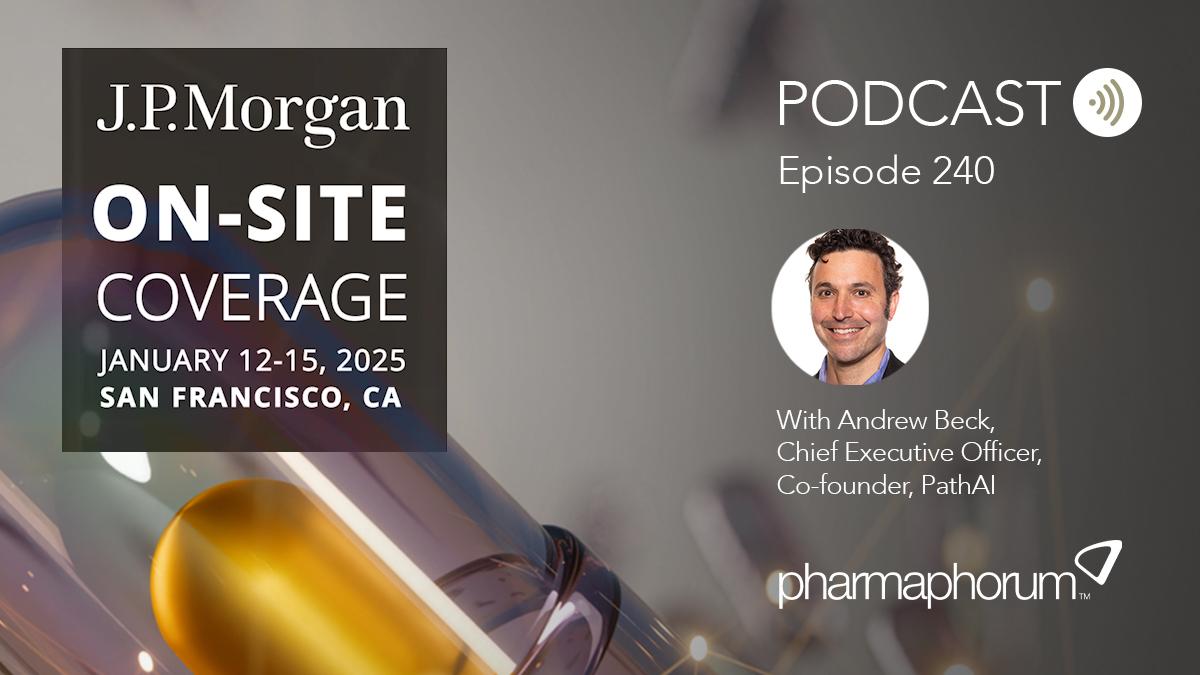Achieving launch excellence in orphan medicines

New rare disease treatments face a complex market access landscape that presents fundamental challenges for pharmaceutical companies seeking to achieve launch excellence.
Each rare disease might only affect a tiny percentage of the population, but orphan medicines are growing in interest and importance for pharmaceutical companies, increasing the pressure to make each product launch as successful as possible.
To assess the market access environment for orphan medicines, and launch excellence strategies that manufacturers can employ, a recent pharmaphorum webinar, held in partnership with IQVIA, examined some of the challenges that pharma companies face.
The online Orphan Medicines Launch Excellence debate heard from Peter Meeus, who was until this year head of region Europe at Shire, and IQVIA experts Angela McFarlane, Jeffrey Keefer, Sarah Rickwood, and Max Newton.
“It used to be the case in the late 90s and early 00s that most of the uptake for drugs was in primary care products for hundreds of millions of patients globally. There were speciality product launches, but they were fewer, and fewer still of the blockbuster launches,” IQVIA’s European Thought Leadership vice president Sarah Rickwood told the webinar audience.
Drawing from IQVIA’s recent whitepaper, ‘Orphan medicines launch excellence: Sustaining launch success as Orphan Medicines come of age’, she explained how the landscape has changed.
“By the time our latest Launch Excellence whitepaper was published, the picture had become very different. The majority of the most successful and impactful launches in the industry were in fact speciality launches. The mainstream launch environment has become much more speciality-focussed.”
There are clear signs of this in current regulatory approval trends. In 2018 both the FDA and EMA licensed more orphan medicines than mainstream treatments, and IQVIA predicts that 45% of all FDA approvals will be orphan medicines between 2019-2023.
But, Rickwood noted, it is important to emphasise that orphan medicines still only represent a small share of the overall pharmaceutical market. In the EU, for example, IQVIA estimates that only 5% of the global list price market value is orphan medicines.
Moreover, it must be recognised that there are still budgetary concerns and pushback from payers. “That needs to be understood and navigated to make your medicines available to the patients that need them,” Rickwood said.
“There is also growing competition, with an increasing number of players in orphan medicines and the potential of orphan biosimilars in the future.”
The rise of restrictive approvals
Max Newton, a European thought leadership consultant at IQVIA, added that HTA bodies are giving negative or restrictive decisions on a growing number of orphan medicines in major European markets. Restrictive outcomes in France grew from 4% to 12% between 2015-2018, and in Germany from 8% to 18%, according to IQVIA data.
“The market access environment is increasingly challenging for all medicines at the moment, but orphan medicines have been subject to some of the biggest delays to access,” he said. “Their slow and often uncertain progress contrasts to the often more straightforward progress for other medications.”
Only 11% of medicines in the white paper’s cohort (which looked at 2010 onwards) received an unrestricted positive appraisal across three European markets at their original submission.
One problem, Newton said, is that no HTA body has yet applied a simplified route for rare-disease medicines. The often-cited example of NICE’s highly specialised technologies (HST) route caters only to ultra-orphan medicines, of which NICE says there are only around three a year.
“There remains a need for a consistent, bespoke approach for orphan drugs appraisals,” he said.
This, he added, can and should be driven by companies in the area themselves. If not “this restrictive attitude will continue unless proactive steps are taken by companies launching in this space”.
Newton added: “Orphan medicine developers should not expect governments and payers to take action on their own. Having a dialogue that acknowledges the choices payers must make and which makes constructive contributions to the ongoing debate about cost and affordability is critical.”
Presenting one way this could be done, he used the example of the CEOs of bluebird bio and Spark Therapeutics, the two biotech companies that jointly authored an article in 2017 discussing possible value frameworks for gene therapies.
IQVIA says another beneficial strategy is to understand and acknowledge ancillary treatment costs – for example, hospital visits, counselling, patient support, travel time to distant specialist centres, adjunct therapies and even the long-term consequences or costs of long-term curative or disease-modifying therapies.
Its report also shows that the use of real-world evidence (RWE) can be highly beneficial in orphan medicines launch strategies – only 9% of submissions in the cohort that provided RWE received a negative decision.
However, Peter Meeus, responding to an audience question, noted that HTA bodies often still see RWE as something to be used post-marketing, rather than embedded into the original submission.
Rickwood agreed, saying: “We all have a duty to educate doctors and HTAs about the benefits of RWE.”
Rethinking clinical trials
The panellists noted that traditional clinical trials are not necessarily optimal for the unique circumstances of rare diseases patients, and poor trial design can often cause problems further downstream when it comes to market access. But new technologies are changing this.
Jeffrey Keefer, head of the Pediatric and Rare Disease Center of Excellence at IQVIA, said that alternative trial designs can help with speed of trials in rare diseases. “We’re seeing more and more of these being put into clinical development plans to help get trials done more quickly. These include things like alternative modelling and simulation strategies to keep the patient numbers down or using real-world data to create external comparator arms so we can eliminate the placebo arm.”
Angela McFarlane, IQVIA’s market development director, added: “Given that rare disease experts are geographically scattered, there really has to be a move towards more virtual trials though the digitisation of clinical research.”
Meanwhile, Rickwood said that data, advanced analytics and AI can be used to improve recruitment rates for clinical trials in rare diseases.
She used an example of a trial IQVIA worked on, studying a rare form of blindness. IQVIA used real-world prescription and claims data to identify physicians who had seen an active patient in the last year – patients who therefore had the potential to be eligible for recruitment into the clinical trial. This increased the patient pool substantially, and also improved the speed with which patients were recruited into the trial and in turn the path of that particular medication to approval and market.
Navigating Brexit
McFarlane said that she sees a pan-European negotiating table for orphan medicines being established in the near future, where member states can pull together to negotiate price and share financial risk.
But Brexit puts the UK at risk of being deprioritised for launch in orphan medicines. “The UK is recognised as a global leader in medical research, and UK centres currently receive 50% of rare disease funding under Horizon 2020,” McFarlane said. “Although the UK government has stated they will underwrite EU funding until 2020, very little has been said beyond this.
“But it isn’t just the UK that stands to lose out – it also calls into question things like research collaboration and patient mobility. It isn’t clear how any of this is going to play out after Brexit.”
She had a clear message for all companies involved in the rare disease space: “From a lobbying point of view everyone in the rare disease space has a responsibility to push both the EU commission and the UK government on these points.”
The market access umbrella
The key takeaway from IQVIA’s report discussed during the webinar, was that it is essential to think about market access as early in the drug development process as possible.
Rickwood referred to market access as an “umbrella” under which every other aspect of clinical development should sit, while Keefer said that companies need to work backwards from market access, not forwards from clinical development.
The speakers looked at three ways to overcome the core challenges orphan drugs face in their quest for launch excellence:
- Consult payers, patients and HTA bodies at the earliest possible stage in clinical development
- Build an early understanding of the market access environment across all markets, not just the US
- Recognise the reality of budget limitations and aim to be involved in shaping the debate on value assessments
Rickwood said that early dialogue helps to achieve the correct label as well as the orphan medicine designation that the product deserves.
She continued: “To make sure that approval is expedited with the right clinical trial design, consulting patients and payers early on in the design process is essential. And that may involve effective early deployment of medical affairs in the development of the product.
“You need to minimise the gap between the label population and the population the HTAs will recommend funding for. That challenge should be addressed right from the start, at the earliest stages of development. Payers should be consulted early on so that when the product comes to them, they will be more minded to be positive.
“It’s about education and making sure as an organisation you are constantly engaged with the market.”











